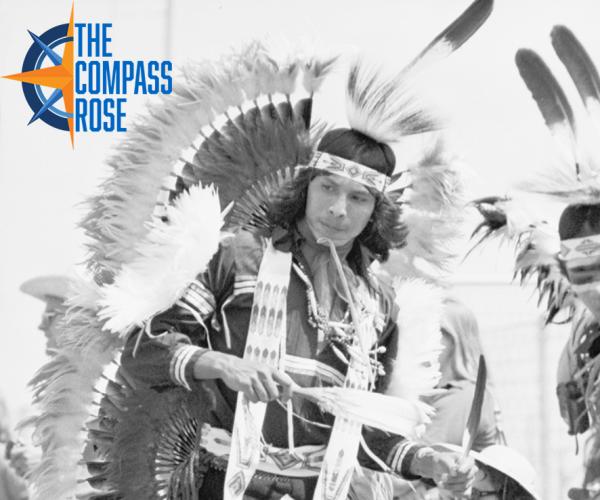
Celebrate Native American Heritage Month with the Archives!
The purpose of the Compass Rose is to raise awareness of Special Collections’ resources and to foster the use of these resources. The blog series also reports significant new programs, initiatives, and acquisitions of Special Collections.
Native American Heritage Month began as several different days and weeks that were set aside for celebrating Native American and Indigenous cultures, communities, and people. One early iteration began in 1915 as a Boy Scouts of America "First Americans" day. Dr. Arthur C. Parker, a member of the Seneca Nation and prominent archaeologist, historian, and folklorist, had persuaded the group to celebrate this day as a means of educating others about Native and Indigenous communities. On September 28, 1915, Reverend Sherman Coolidge, an Arapaho Episcopal Church priest and founder of the Society of the American Indian rights organization, issued a proclamation during the Congress of the American Indian Association annual meeting declaring the second Saturday of May as "American Indian Day". Rev. Coolidge was serving as president of the Congress at this time, and it was this Congress that formally approved a plan for this celebration. In 1990, President George H. W. Bush signed a resolution dedicating November as "National American Indian Heritage Month".
Native American Heritage Month celebrations, Pow Wows, other annual celebrations and , have drastically changed this year. However, thanks to the photo collections here at the UTA Special Collections, we can take a look at a few images past celebrations!
These images are from our Fort Worth Star-Telegram Collection, and show various competitors and dancers at the 20th Annual National Championship Pow Wow that was held in Grand Prairie in September, 1982. Pow Wows occur throughout the country, with the largest Pow Wow in North America being the Gathering of Nations held in New Mexico. Pow Wows are opportunities for Native American and Indigenous people and communities to gather together to celebrate their cultures, participate in different competitions, purchase goods from across the country, and eat delicious food!

A group of dancers, dressed in traditional Native American regalia and headdress, preparing to compete in a dance competition or exhibition.
This first image shows a group of men in Native American regalia preparing to dance in either a dance competition or exhibition. A few of the men are holding dance sticks, which hold different meanings in different tribal groups. The men also wear bells tied around their knees, which will make beautiful sounds as they dance. These men's dances will be accompanied by live music, drums, and singing.
This next image is of a young man participating in a group dance. His regalia is a bit more elaborate, and he is wearing fanned out feathers in a bustle.

A dancer, dressed in traditional Native American regalia and headdress, with large feather bustles.
The next image is of a man in traditional regalia wearing face paint drawn in vertical lines.

A dancer, dressed in traditional Native American regalia and face paint.
Our final image is of Vincent Pocowatchit, a member of the Comanche Nation, preparing for his dance.

Vincent Pocowatchit, member of the Comanche Nation, dressed in traditional Native American regalia, adjusting his headdress
These images offer a glimpse into the beauty of Pow Wows. Pow Wows are open to non-Native or Indigenous visitors, and here at UTA the Native of American Student Association hosts an annual Pow Wow every Spring. Visiting a Pow Wow is an excellent opportunity to learn about different cultures, but the purpose of a Pow Wow is not solely to educate attendees. If you choose to attend a Pow Wow in the future, it is important to remember a few important rules: Adhere to the rules of the Pow Wow as outlined online or in handouts. Only take photographs when permitted, or with permission. Do not copy Native American or Indigenous styles in your own outfit. Regalia should be referred to as regalia, not costumes. Above all else, be respectful and kind!
These images are just a few samples from our collection. Keep an eye our for future blog posts, and check out our digital gallery for more photos!

Add new comment